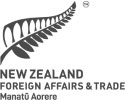Weekly Global Report:
Prepared by the Economic Division at the Ministry of Foreign Affairs and Trade.
Feedback
We welcome feedback from New Zealand exporters on this report and invite requests for reporting from New Zealand’s network of Embassies and High Commissions. If you would like to subscribe to this weekly update, go to our subscription page(external link) or email us at exports@mfat.net.
Highlights
- The New Zealand Government has signed a memorandum of understanding(external link) (MOU) with agribusiness leaders in an effort to reduce agricultural emissions. The MOU is a joint venture as part of the new Centre for Climate Action on Agricultural Emissions and was signed by the Ministry for Primary Industries signed the agreement alongside representatives from ANZCO Foods, Fonterra, Ngai Tahu Holdings, Ravensdown, Silver Fern Farms and Synlait. Read more here.
- The Government has announced an increase to the Recognised Seasonal Employer Scheme (RSE), providing 3000 additional places(external link). The new RSE cap will allow access to 19,000 workers annually from participating Pacific countries. Read more here.
Regional Updates
Domestic Updates
- Overseas visitor arrivals exceeded 100,000 in July, for the first time since the borders closed in March 2020 – with 134,200 visitors in July – according to data from Stats NZ.
- The Government has introduced the Worker Protection (Migrant and Other Employees) Bill(external link) designed to protect migrant workers from exploitation. The Worker Protection (Migrant and Other Employees) Bill will introduce the remaining changes from the Government’s Temporary Migrant Worker Exploitation Review completed in 2020, including establishing an infringement regime. Read more here.
- The Government has passed a bill to end the export of livestock by sea(external link), starting 30 April 2023. The Government started a review of the livestock export trade in 2019 in response to concerns the trade could be a risk to New Zealand’s reputation. Read more here.
- If people overseas are buying your products or services, NZTE is here to help, whether your business is big or small, just starting out or looking to expand. myNZTE(external link) is an online portal created by NZTE where you'll find best-practice exporting advice, including resources to grow your financial capability, tools to find overseas markets, insights from our global experts and much more.
Australia and the Pacific
- New Zealand and Australia have partnered to provide SouthPAN(external link), a satellite-based augmentation system that provides positioning and navigation services for users in Australia and New Zealand. The world-leading satellite positioning services are up to 50 times more accurate, and have the potential to benefit many major sectors in New Zealand from transport, construction, and utilities to agriculture, forestry, and horticulture. This week, SouthPAN Early Open Services became available for certain applications. Read the joint Australia and New Zealand SouthPAN ministerial media release(external link).
- Removal of health restrictions: All health restrictions for travel to Samoa have been removed from Thursday 22 September, including mandatory COVID-19 testing and proof of vaccination. Health declaration cards for arrival are still required. Samoa has vaccinated over 90% of its eligible population and active case numbers appear to have plateaued.
- Niue has today returned to Code Blue, the lowest of its pandemic response settings, and currently has no cases of COVID-19 on island.
Europe
- The European Commission has proposed a new “Single Market Emergency Instrument”(external link) (SMEI) designed to prevent supply chain disruptions during future crises, similar to those experienced at the start of the COVID-19 pandemic (which initially hampered a united and coordinated EU response). The SMEI includes measures to ensure the free movement of goods, services and people within the EU Single Market and the availability of essential goods and services in case of future emergencies.
- The Dutch horticulture sector is facing rising energy prices, supply chain disruptions, a decreasing labour supply, and decreasing consumer demand. Sector experts expect significant consolidation of the sector, with a 30% to 40% reduction in activity from businesses as they manage the challenges. The sector has previously been a major contributor to the Netherlands economy and to their labour market. The Netherlands is also a key exporter of horticultural products to other EU markets. With production in the sector expected to fall, the Netherlands will look more towards imports of certain products, leading to opportunities for businesses outside the European Union, such as New Zealand.
- 63% of Swiss voters have rejected an initiative to ban intensive livestock farming and boost animal welfare. The initiative had demanded various improvements for farm animals, including guaranteed regular outdoor access and a reduction in the maximum numbers allowed in a single stable. The requirements would have also covered imported animals and animal products. Even though Switzerland is currently preoccupied by the energy crisis, agriculture’s impact on the climate and the environment is not going to disappear from the political agenda. Other initiatives will almost certainly be launched in the coming years.
Americas
- The US held the first US – Pacific Island Country Summit(external link) in Washington last week. Among a number of outcomes the White House announced the dialogue is intended to promote trade and investment
between the regions.
Market reports released this week
- Read the previous global economic round-up
- Biden Administration scores climate win through Inflation Reduction Act – October 2022
- The Dutch Horticulture sector: an innovative sector facing an energy crisis and rising costs – September 2022
- Europe’s energy security crisis: Outlook and responses – September 2022
External links
The following links may provide useful information to businesses:
- NZTE(external link) has a website focused on providing COVID-19 information for exporters. They’ve also launched myNZTE(external link), an interactive digital portal of insights and tools available to all New Zealand exporters.
- The Treasury releases a weekly economic update(external link) every Friday. Stats NZ has published a data portal(external link) with near real-time economic indicators.
- MBIE publishes a sector reports series(external link) which provides regularly updated reports on all industry sectors that make up the New Zealand economy. These include official economic data and the challenges and opportunities that face New Zealand’s industry sectors.
- Business.govt.nz(external link) provides tools and advice from across government to save small businesses’ time and help make the business a success.
- MFAT has created a tariff finder(external link) which is designed to help goods exporters and importers maximise benefits from New Zealand’s Free Trade Agreements and compare tariffs in 136 other markets.
- The all of government Trade Barriers(external link) website can be used to register any trade barriers experienced or issues exporting to an offshore market. Queries can be sent via the website or through the MFAT Exporter Helpline 0800 824 605. Enquiries will be sent to the government agency best placed to answer.
- Tatauranga Aotearoa Stats NZ provides official data on the value of New Zealand’s exports and imports of both goods and services, by commodity type via the New Zealand Trade Dashboard(external link). This interactive dashboard is updated every quarter and allows for filtering by country and by commodity type.
More reports
View full list of market reports.
If you would like to request a topic for reporting please email exports@mfat.net
Sign up for email alerts
To get email alerts when new reports are published, go to our subscription page(external link)
Disclaimer
This information released in this report aligns with the provisions of the Official Information Act 1982. The opinions and analysis expressed in this report are the author’s own and do not necessarily reflect the views or official policy position of the New Zealand Government. The Ministry of Foreign Affairs and Trade and the New Zealand Government take no responsibility for the accuracy of this report.

